Around the internet, you'll find various uses for old tires such as making
sandals for your feet. Below are some notes about how to remove a
steel belted radial tire from the rim and cut it apart.
Here's the donor car for the tire and rim
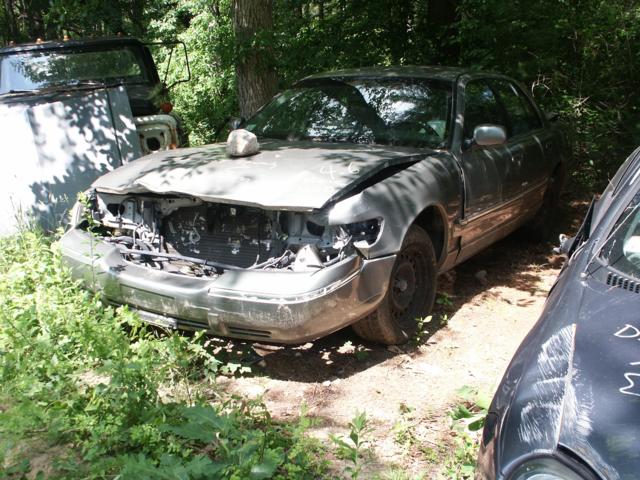
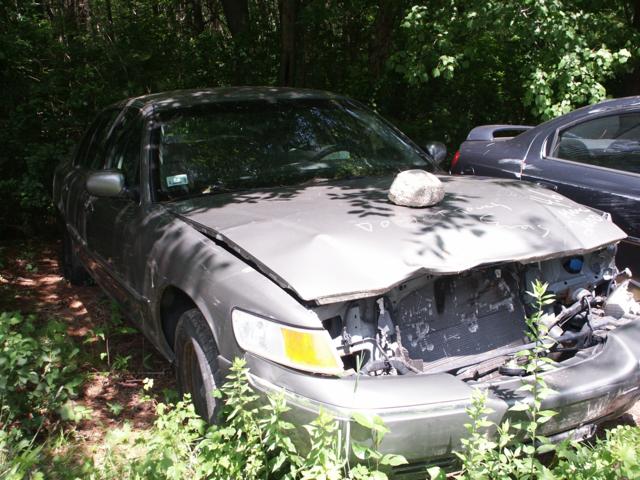
The car had locking hubcaps. Luckily, the key to remove them was in the
glovebox
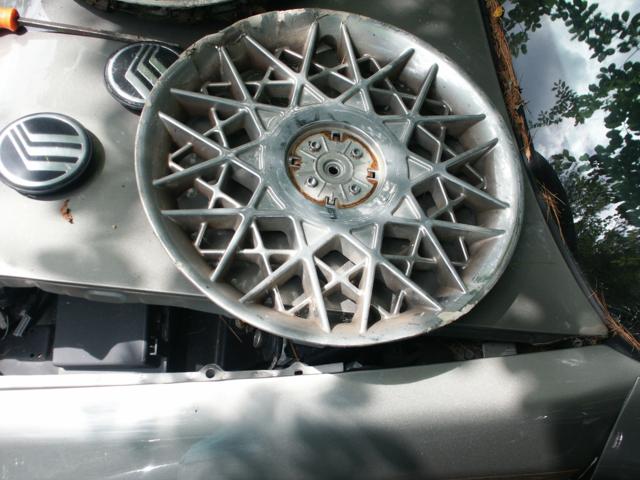
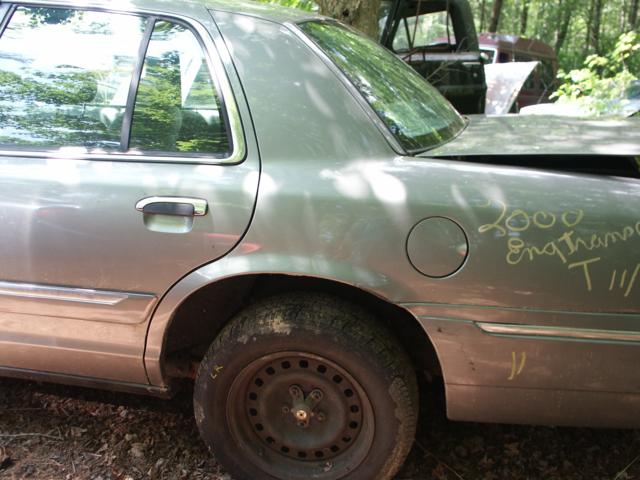
Now that we've seen the donor car, let's take a look at the wheel and
tire that were removed from it.
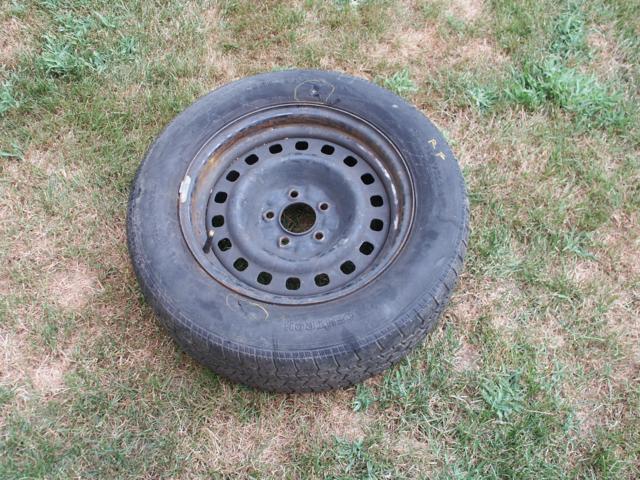
The tire is junk due to a couple unrepairable gouges in the sidewall. I
had read on the internet that it's possible to cut a tire off the rim,
and was intrigued. I looked around for my sawzall, but couldn't find it
so out comes my angle grinder instead
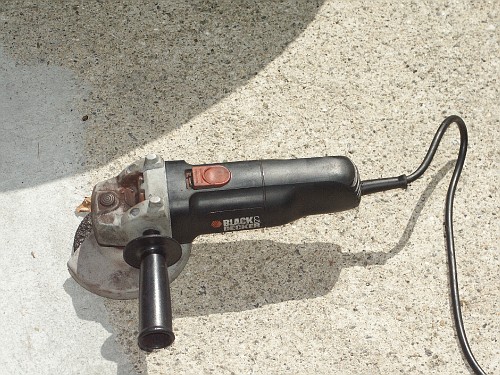
And a small rotary dremel tool with a reinforced fiberglass cutoff wheel

A drywall knife
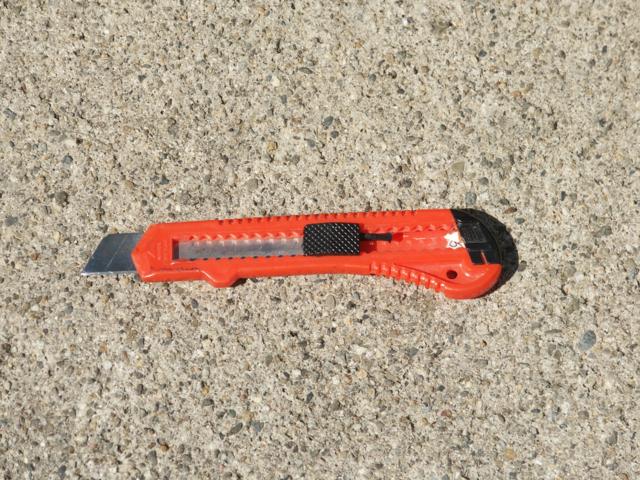
A long prybar

A large 8" C-Clamp
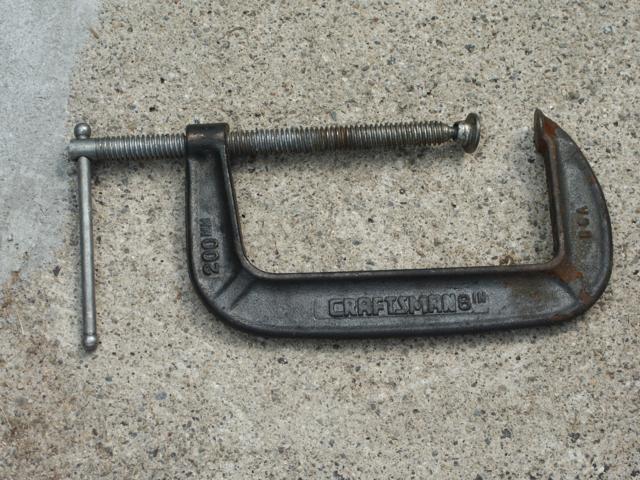
All the tools laying side by side.

Looking at how a tire changer machine like the
hunter tc3500 works, you'll notice that it squeezes squeezes the
two sides of the tire sidewalls inwards. Backyard mechanics don't
usually have access to one of these machines, but a large c-clamp can
provide similar compression.
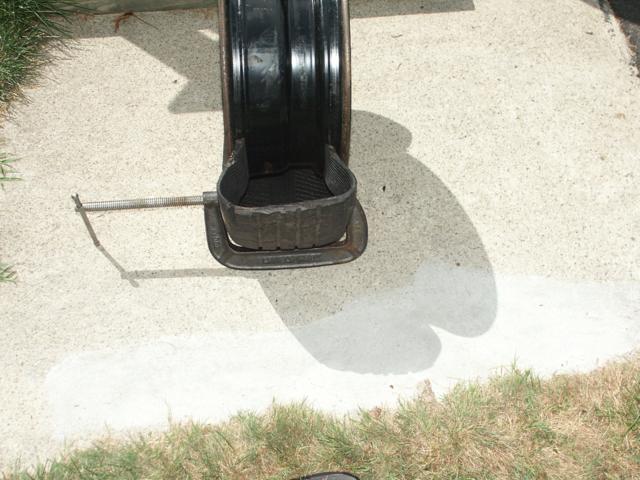
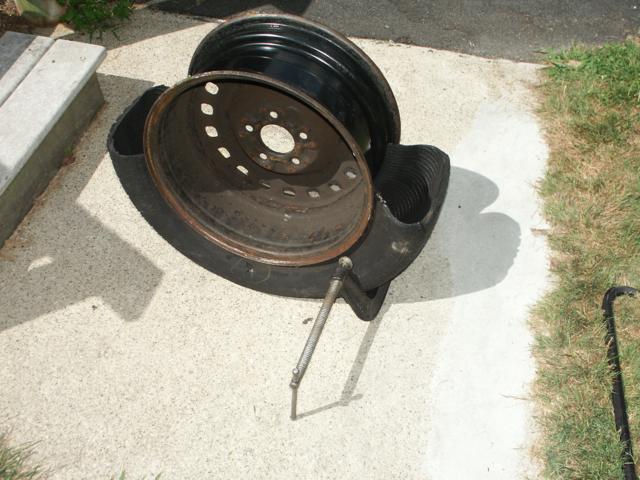
You could get more uniform load distribution by placing a block of wood
in between the c-clamp and the tire sidewall on each side
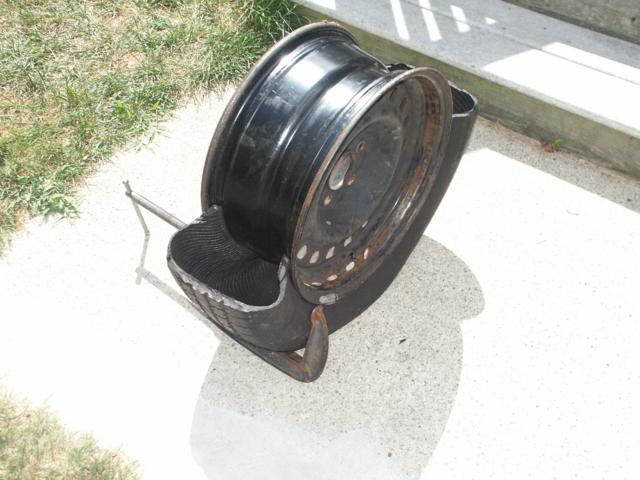
Do note that there is no hydraulic assistance with like a professional
tire changing machine, so you might have to really push hard on the
c-clamp handle to get it to move.
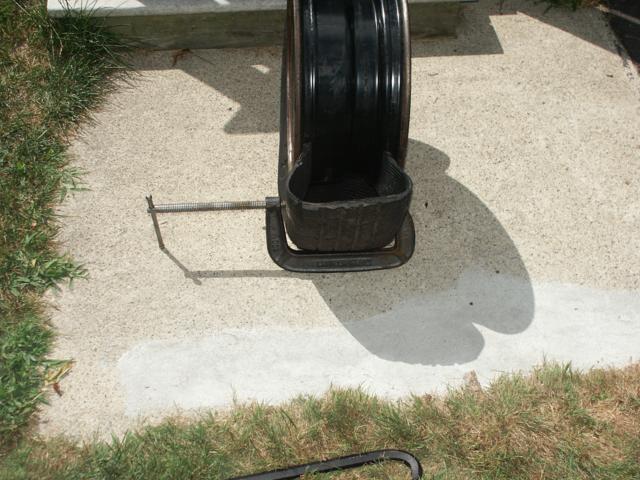
With a fully inflated tire that hasn't been cut in half like this,
you'll want to remove the valve core from the valve stem first. This
will allow air to freely flow in and out of the tire. If you don't have
the proper valve stem tool, a pair of fine tip needle nose pliers can
be used to spin the valve core out. Or you could just cut the valve
stem off all together.
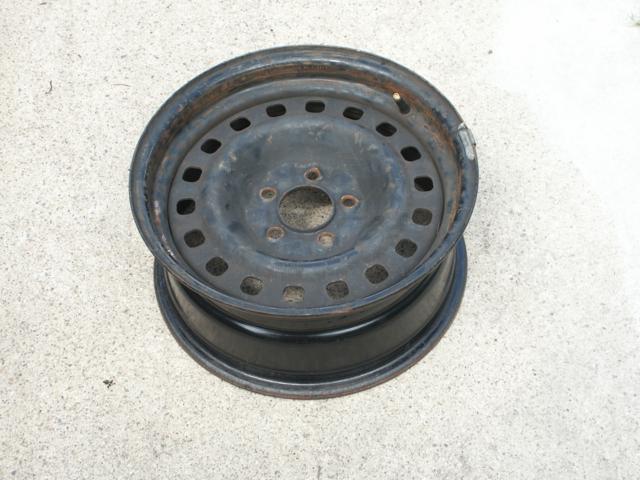
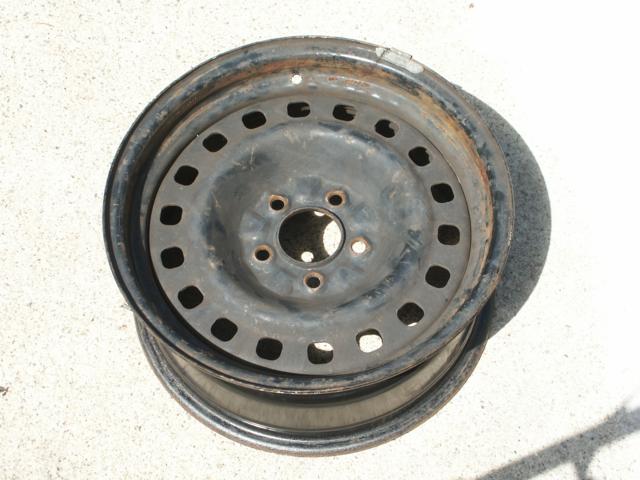
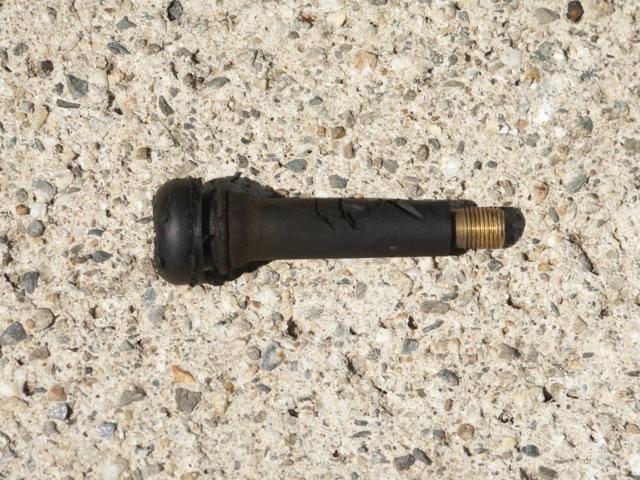
The tire is held to the rim by an area called the bead. This is a thick
peice of rubber with a bundle of wires inside it. Tire shops use a
special long prybar called a tire spoon to compress the rubber enough
to lift it over the rim flange. Since most shadetree mechanics don't
have this tool, the tire bead wires are going to be cut instead.
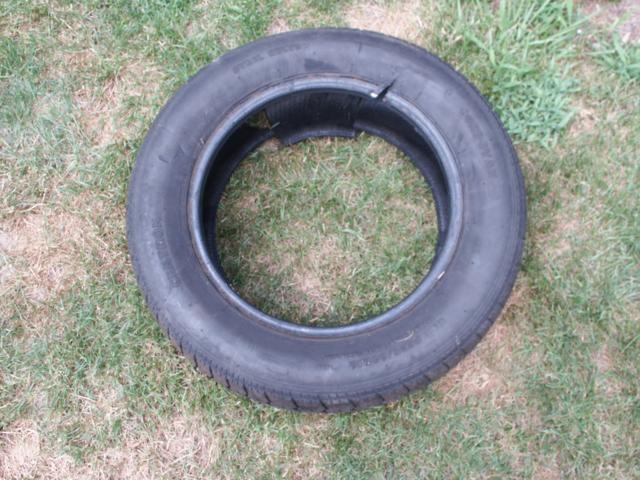
During this process, the prybar pictured above was used to keep the
tire far enough away from the rim that a dremel could get in. The
prybar was not used to brute-force the uncut tire bead over the rim
flange because this would have left numerous tool marks on the rim.
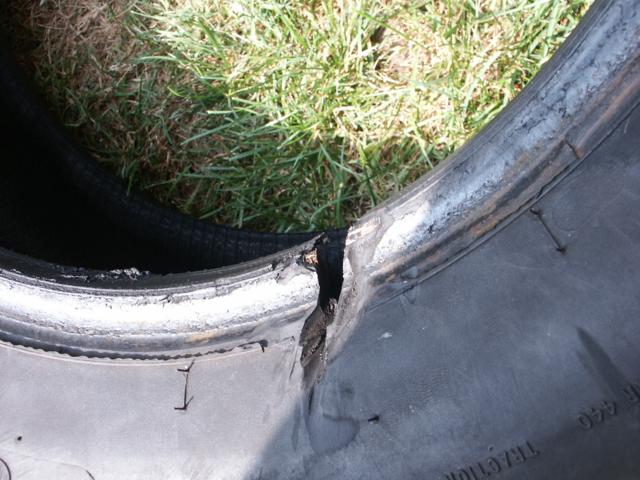
The sidewall in between the bead and tread surface is relatively weak
on steel belted radial tires. You can cut though it with a the drywall
knife pictured.
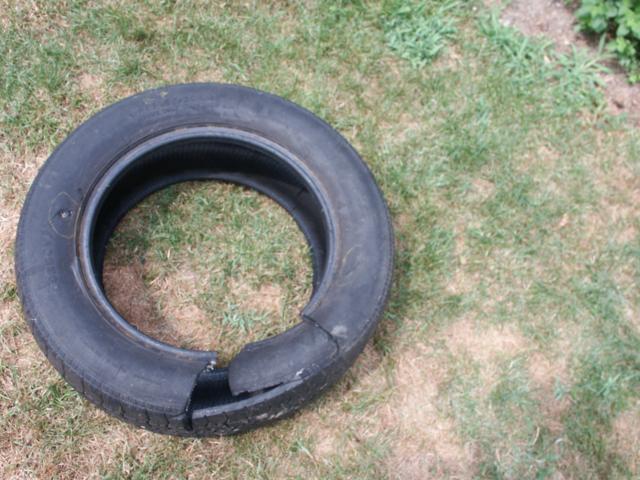
You will however need a saw blade or cutoff wheel for the bead wires.
That bead wire is strong stuff, and there were 16 individual wires in
this particular tire.
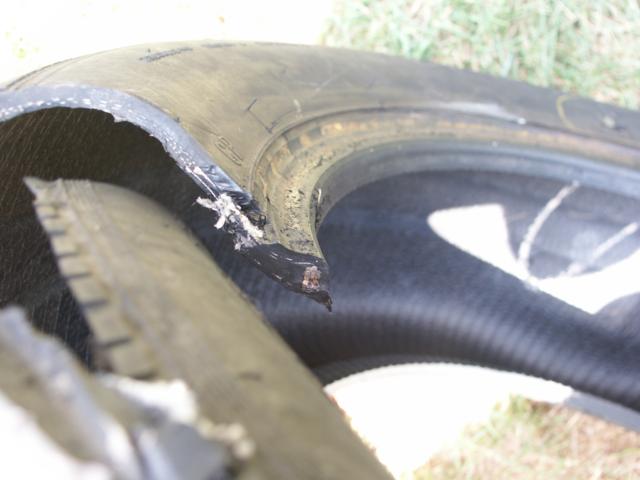
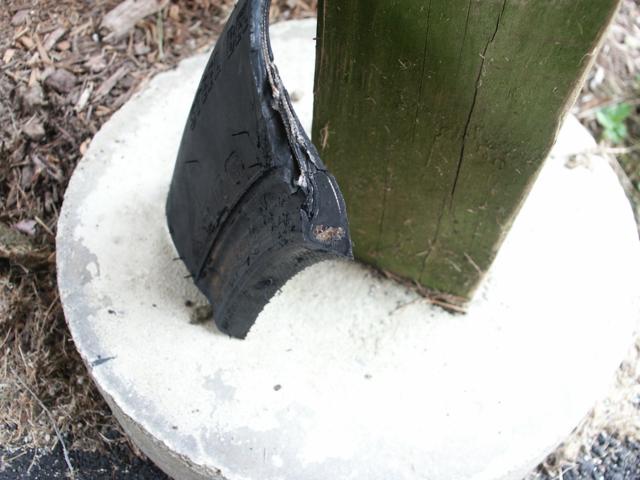
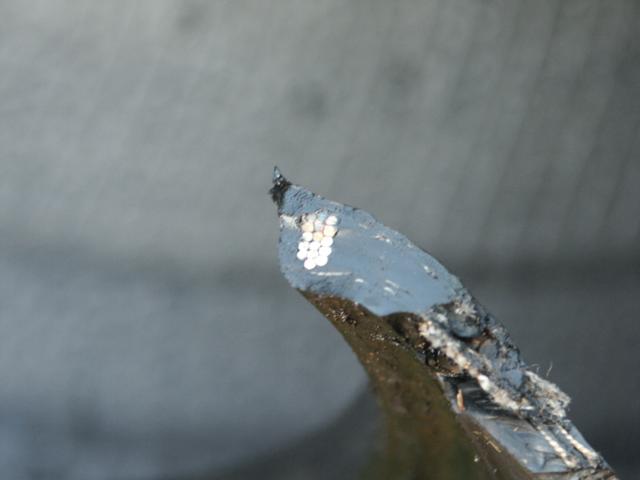
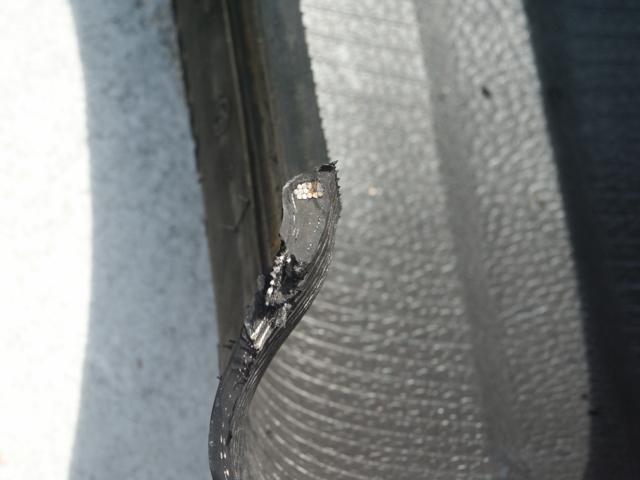
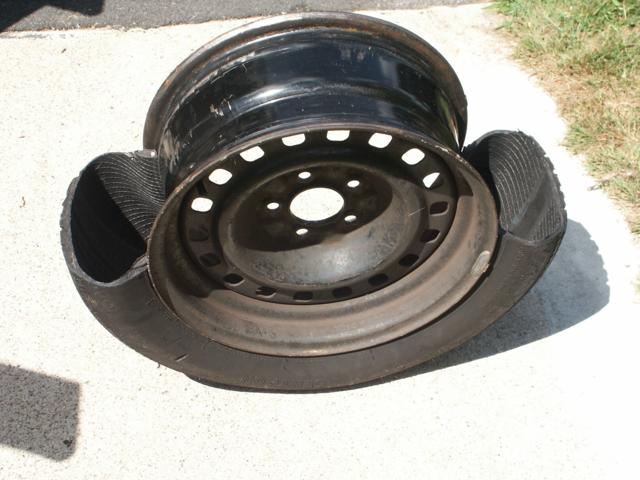
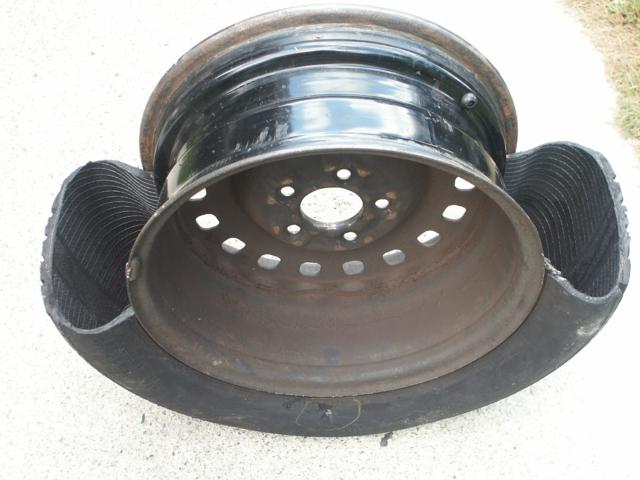
You'll also want something other than a knife to cut through the tire
tread surface. The rubber in this area is quite hard and is really
thick which would take quite some time to carve out. But the big thing
is that there are two layers of steel reinforcement belts here too. So
you'll need a saw blade or cutoff wheel again.
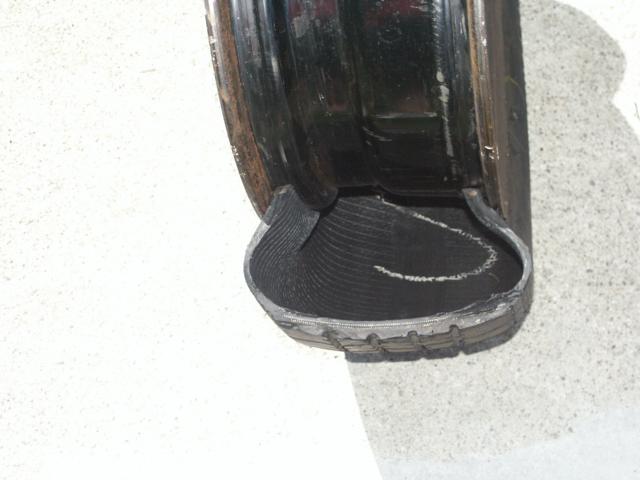
The steel belts and bead wires are the silver colored reflective dots
in the picture.
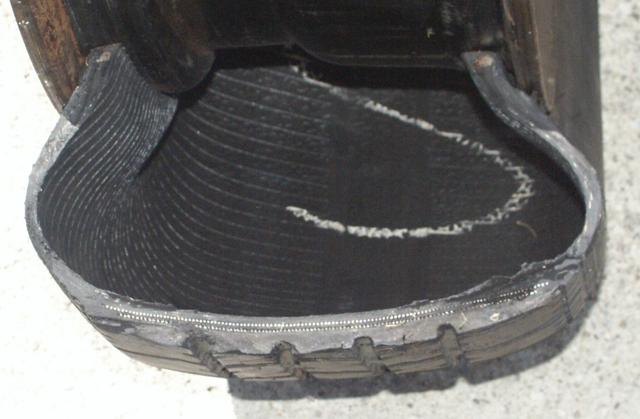
The nylon overlays are easy to cut through with a knife. It's the steel
belts underneath that you won't be able to cut through with this tool
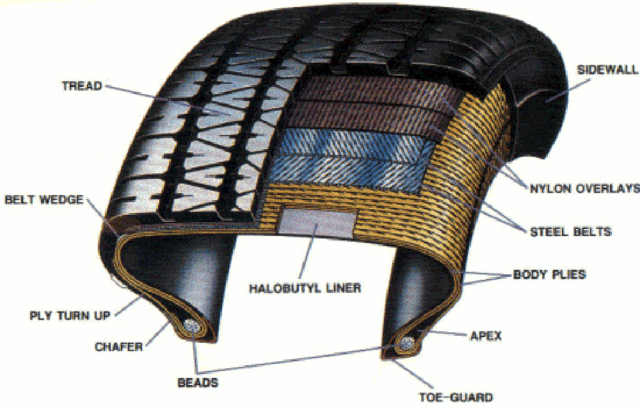
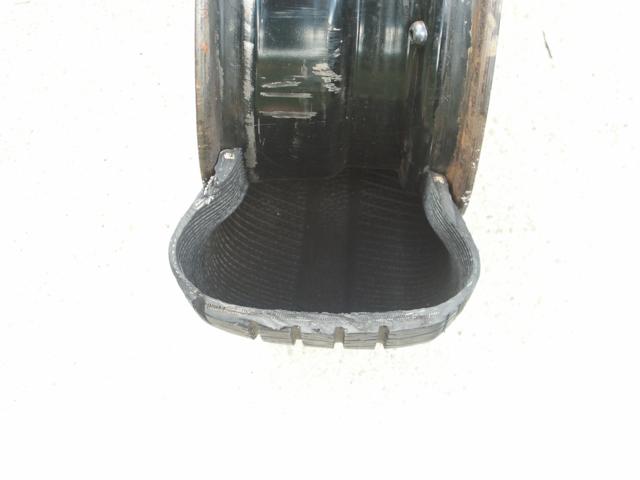
Even if the two peices of the tire are placed back onto the rim, it
seems unlikely that the tire will ever hold air or be able to be balanced again.
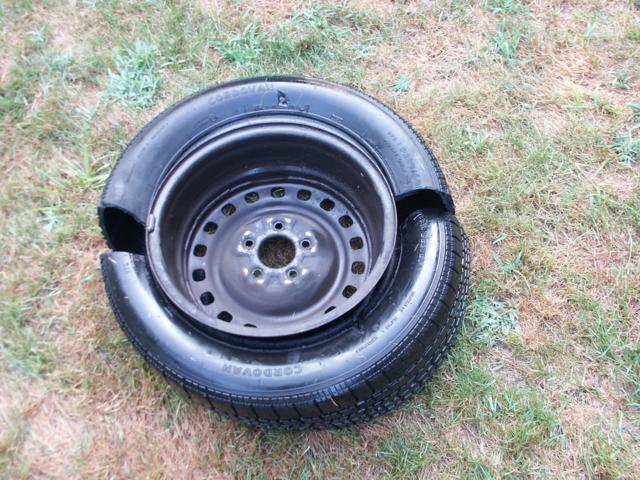
Here are more pictures of one of the tires that I cut in half
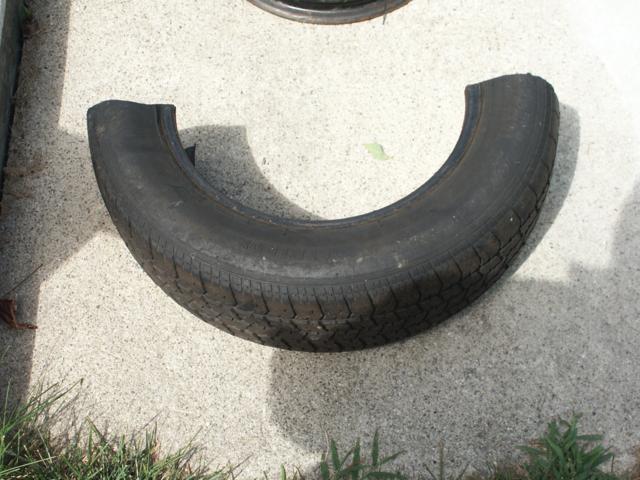
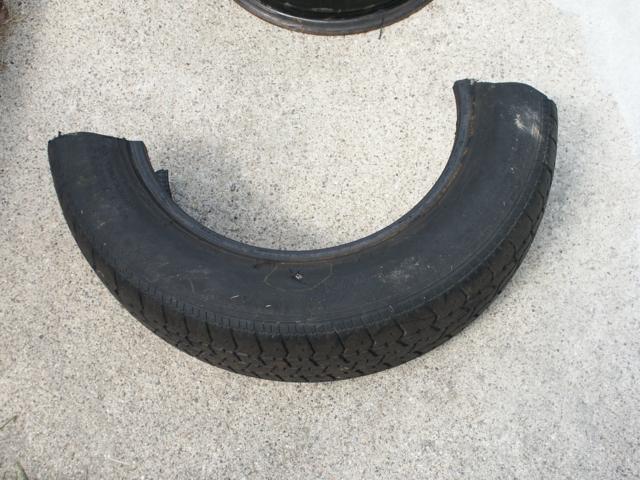
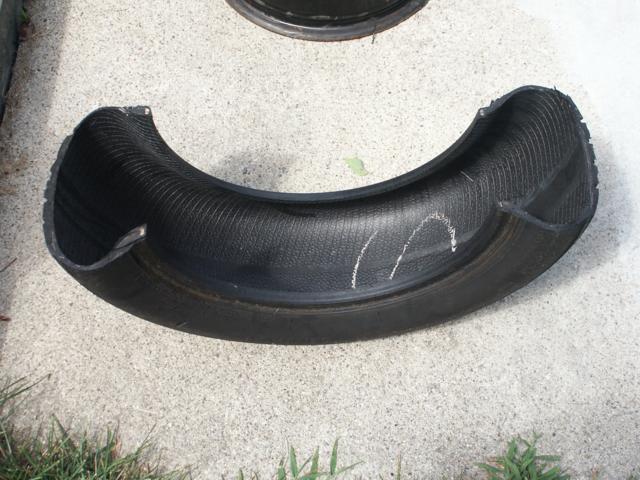

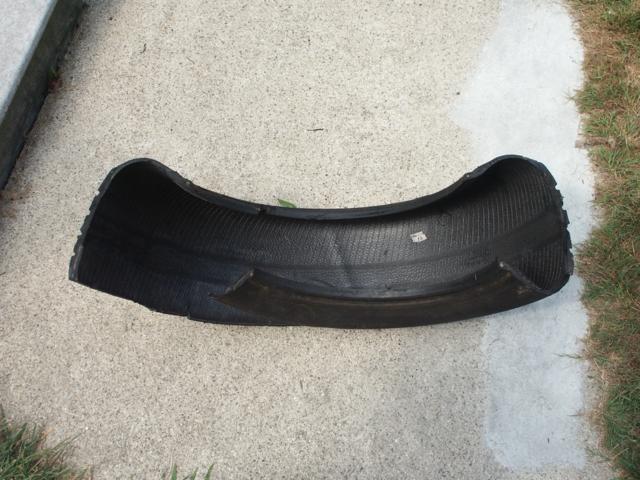
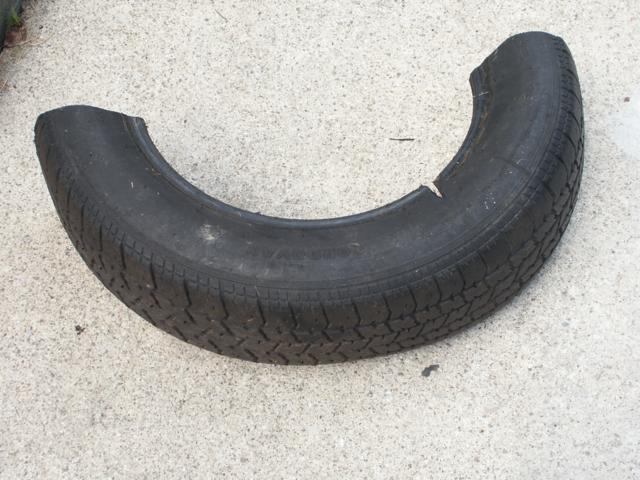
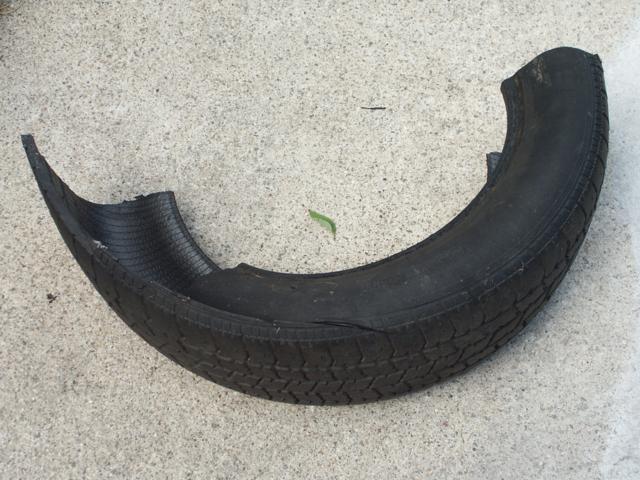
Most modern production cars will have a "drop center" rim similar to
this. Notice how the rim is raised on each side, and there is a lowered
portion in the middle?
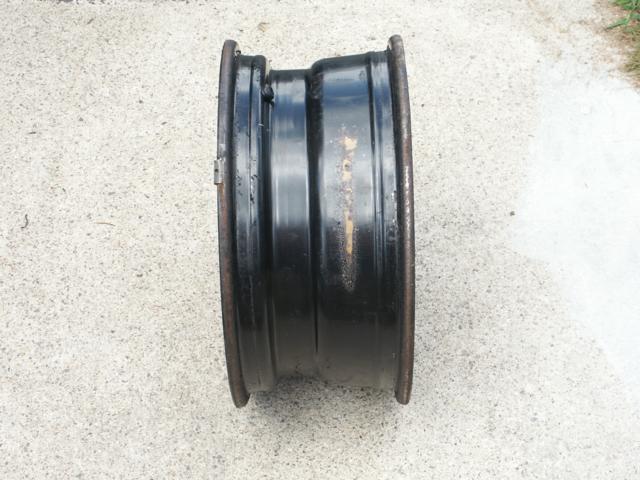
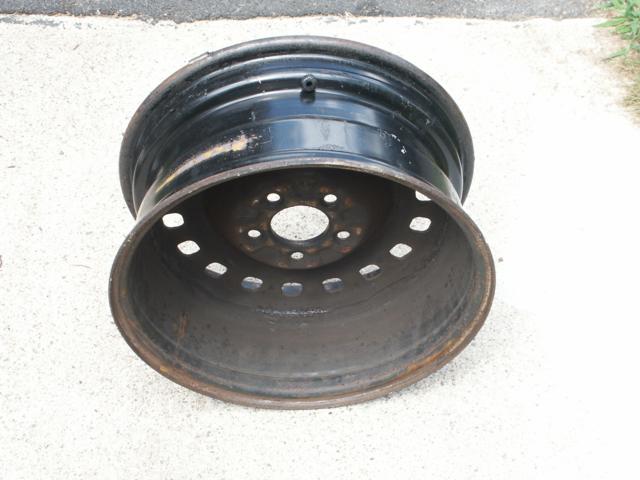
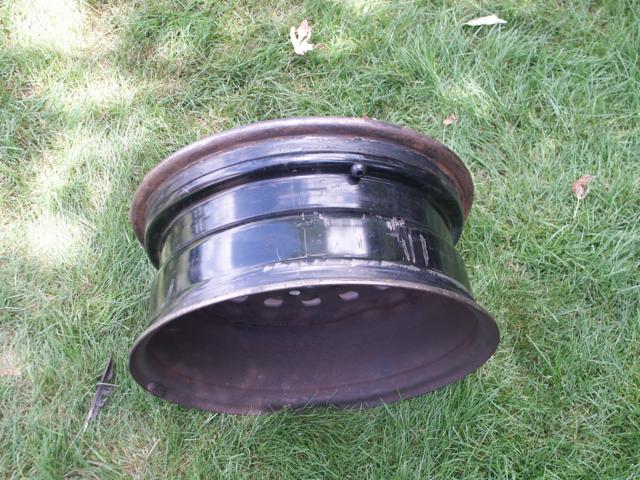

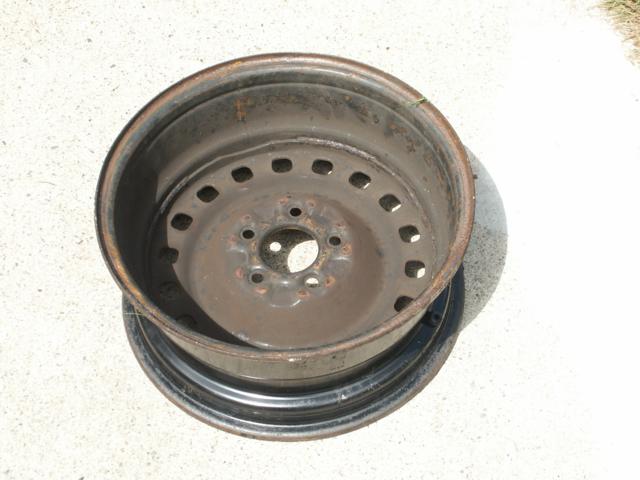
This was a cordovan
brand tire manufactured by cooper
tire in georgia. It had an "S" speed rating.
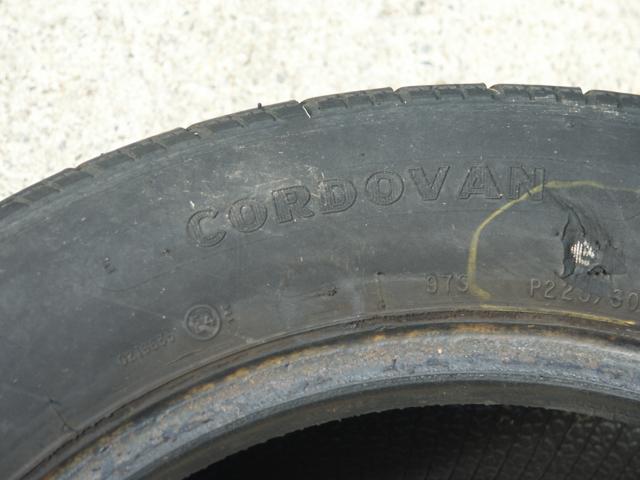
TBC Brands is the owner
of the cordovan trademark
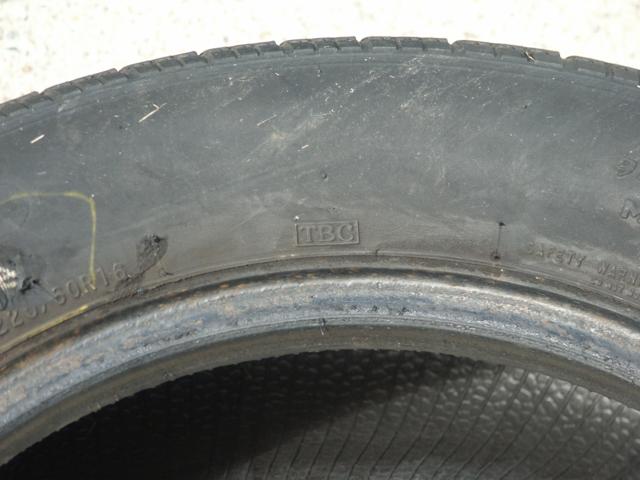
This centron model tire had a dot code of DOT 3DX0 TMT 0806. This means
the tire was manufactured by cooper tire on the 8th week of 2006.
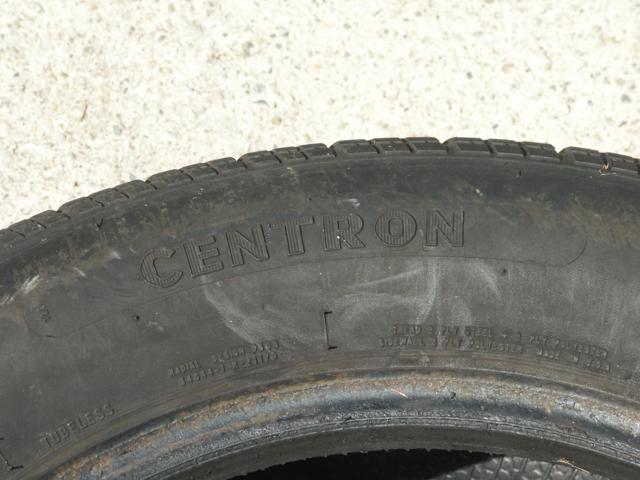
Tire Cutting Notes:
- Wear safety glasses when cutting apart a tire. There are steel
wires inside a tire which could become air borne. Molten peices of
rubber could also go flying.
- Cutting apart a tire with an angle grinder generates a huge
amount of smoke. This stuff is a physical irratant that could cause you
breathing problems. It's also a hydrocarbon based smoke that's
flammable.
- If you are considering cutting apart a tire using an angle
grinder, do so outdoors where there's good ventilation. Do not cut a
tire using an angle grinder inside an enclosed building.
- When cutting apart a tire with an angle grinder, it would be a
good idea to cut for a short period of time and then stop to let stuff
cool down, and then restart the process again.
- Large quantities of combustible smoke can build up in between the
metal rim and the rubber tire during the cutting process. Once you get
a big hole cut into the tire, some of this smoke will be able to vent
out.
- Tire fires are notoriously difficult to extinguish once they get
started.
- Close the windows on your house and wait until your neighbors
have left their homes before cutting apart a tire with an angle
grinder. You will generate large plumes of foul smelling blue smoke. If
any of your neighbors are around, some of them might call the fire
department on you complaining it smells like there's a tire fire at the
local city dump.
- A sawzall would have generated a lot less smoke than a high speed
grinder cutting apart this tire.
General notes:
- The tire pictured above is a steel belted radial tire
manufactured by cooper tire in georgia.
- More pictures of this tire and rim are avaliable on this webpage.
- For sandals
made from old tires, you'll probably want a bias ply tire instead.
These were standard factory equipment on early-1970s and older cars.
They are still used on many minature spare tires that you'll find in a
modern car's trunk. Lawnmowers, recreational ATV's, and some farm
equipment also still use bias ply tires as well.
- A humorous thread about this tire is avaliable by
clicking here.

















































